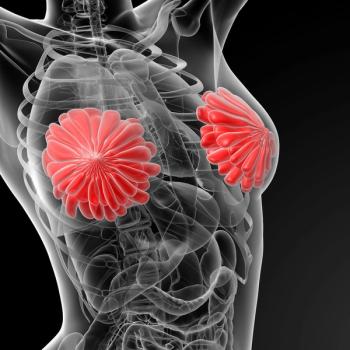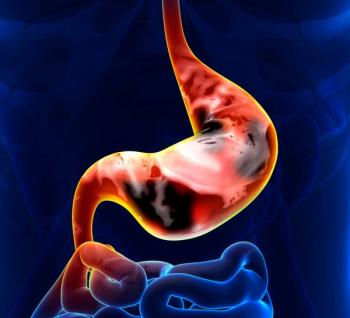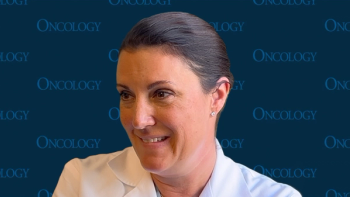
Oncology NEWS International
- Oncology NEWS International Vol 15 No 3
- Volume 15
- Issue 3
Breast, Colorectal Cancer Care Quality 'Excellent'
The first comprehensive assessment of cancer care quality in the United States indicates adherence to recommended care for patients with breast or colorectal cancer is excellent overall, but specific areas need improvement. Overall, breast cancer patients received 86% of generally recommended care, based on 36 quality-care measures. Patients with colorectal cancer received 78% of generally recommended care, based on 25 quality-care measures.
ALEXANDRIA, VirginiaThe first comprehensive assessment of cancer care quality in the United States indicates adherence to recommended care for patients with breast or colorectal cancer is excellent overall, but specific areas need improvement. Overall, breast cancer patients received 86% of generally recommended care, based on 36 quality-care measures. Patients with colorectal cancer received 78% of generally recommended care, based on 25 quality-care measures. The National Initiative on Cancer Care Quality (NICCQ) study, commissioned by the American Society of Clinical Oncology (ASCO) and undertaken by researchers from the Harvard School of Public Health and RAND Corporation, evaluated hospital cancer registries, patient surveys, and patient medical records from 65 hospitals in five US cities, to measure to what degree cancer patients received care consistent with best evidence in the literature and clinical practice guidelines.
Findings were presented at ASCO's 2005 annual meeting. Plans for improvement of care were discussed in the February 1, 2006, online edition of the Journal of Clinical Oncology, and details will be published in national medical journals throughout 2006.
"The study found that for a large majority of patients, there was strikingly higher than anticipated adherence to processes of care. We were very pleased," commented coinvestigator Joseph S. Bailes, MD, of Texas Oncology, in a media telebriefing prior to publication of the study. Dr. Bailes, ASCO's interim executive vice president and CEO, initiated the study during his presidency of ASCO (1999-2000), after a 1999 Institute of Medicine report indicated some cancer patients were not receiving the most effective care for their disease.
Study Protocol
Using data from a mailed survey of participating survivors 4 years after diagnosis and from review of the patients' medical records, the NICCQ study examined average percent adherence to explicit prevalidated quality-of-care measures for patients diagnosed with stage I-III breast cancer or stage II-III colorectal cancer in Atlanta, Cleveland, Houston, Kansas City, and Los Angeles.
A total of 1,287 breast cancer patients and 478 colorectal cancer patients surveyed had complete medical records available for review. In both the breast and colorectal cancer groups, 85% of the patients were white.
Investigators obtained copies of ambulatory medical records from all cancer-care providers and primary care physicians; for colorectal cancer patients, the inpatient record was also requested. Trained nurses used a computer-based instrument to abstract records. When abstraction revealed cancer providers not reported by patients, those physicians' medical records were requested.
"We know this is a unique study in the context of cancer care," said NICCQ coinvestigator Ezekiel Emanuel, MD, chair of ASCO's Task Force on Quality Cancer Care, which oversaw the research. "Most studies just look at billing records; they don't survey physicians and interview patients."
The investigators also calculated the average percent adherence for eight components of care: testing, pathology, documentation, referral, timing, receipt of treatment, technical quality, and respect for patient preferences. All measures with adherence less than 85% were compared statistically against overall adherence for a given city.
For breast cancer, investigators found overall adherence varied across five clinical domains of diagnostic evaluation, surgery, adjuvant therapy, managing toxicities, and surveillance, with adherence rates of 88%, 87%, 82%, 73%, and 94%, respectively. For colorectal cancer, adherence rates in diagnostic evaluation, surgery, adjuvant therapy, and surveillance were at 87%, 93%, 64%, and 50%, respectively.
Selected quality measures with adherence rates above 85% were encouraging.
- Diagnostic evaluation. A total of 99% of newly diagnosed breast cancer patients underwent axillary lymph node sampling, as recommended by guidelines. For colon cancer patients who underwent surgery to remove tumors, 98% of pathology reports stated whether the cancer had spread to the lymph nodes.
- Surgery. A total of 99% of breast cancer patients had clear margins, 98% received radiation therapy after breast-conserving surgery, and 96% received the recommended dose of radiation. When adjuvant therapy was indicated, 96% of eligible breast cancer patients and 92% of colon cancer patients received it.
- Surveillance and follow-up. For breast cancer patients with tumors larger than 1 cm or who were lymph-node positive, ER positive, or PR positive, 92% received tamoxifen for 5 years after surgery; 96% of colorectal cancer patients who underwent ileostomy or colostomy received instruction in enterostomy care.
- Quality measures with adherence rates of less than 85% point to opportunities for improvement, the researchers noted.
- Surgery. Among breast cancer patients who underwent mastectomy as their first procedure, 30% were told that breast-conserving surgery was an option.
- Adjuvant therapy. The planned chemotherapy dose was consistent with published recommendations for 58% of breast cancer patients and 68% of colorectal cancer patients. A total of 79% of colorectal cancer patients began adjuvant chemotherapy within 8 weeks of surgery, as recommended by guidelines.
- Managing toxicities. Among breast cancer patients receiving nausea-inducing therapy, 66% were treated with a potent antinausea drug.
- Surveillance and follow-up. Among breast cancer patients started on tamoxifen, 75% continued to take the drug for the entire 5-year course of treatment. Among colorectal cancer patients, 50% who had removal of a stage II-III tumor were counseled about the need for first-degree relatives to undergo screening.
Articles in this issue
almost 20 years ago
FDA Approves Eraxis to Treat Candidemiaalmost 20 years ago
NeoGuide's New Colonoscopy System Addresses ‘Looping'almost 20 years ago
New Budget Plan Cuts NCI Funding by 0.8% for FY 2007almost 20 years ago
Lilly Oncology on Canvas Invites Entriesalmost 20 years ago
Shorter FEC + Pac Ups DFS in Breast Caalmost 20 years ago
Xyotax Fast Tracked for Advanced NSCLC in Womenalmost 20 years ago
FDA Guidances for Early Human Testing of New Drugsalmost 20 years ago
Zactima Gets Fast Track Status for Medullary Thyroid Canceralmost 20 years ago
Darbepoetin During RT Boosts Hb Level, With QOL Benefitalmost 20 years ago
Dose-Dense Adjuvant Chemo Validated in Breast CancerNewsletter
Stay up to date on recent advances in the multidisciplinary approach to cancer.


















































































